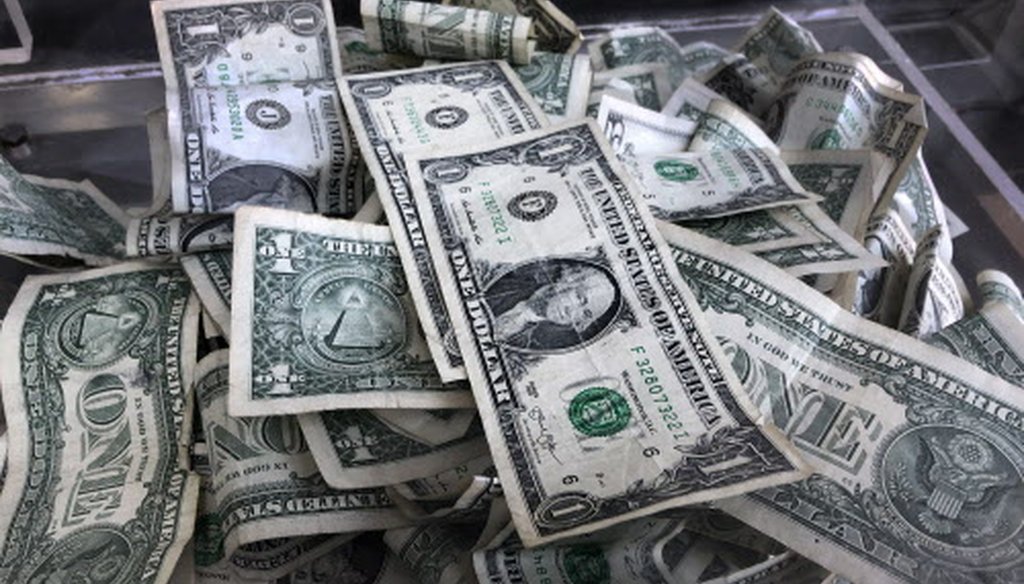



Rep. Daniel Riemer (D-Milwaukee) says a tax credit issued to manufacturer and agriculture producers is going to millionaires. (Associated Press).
According to state Rep. Daniel Riemer (D-Milwaukee), a tax credit issued to manufacturer and agriculture producers is making the rich richer.
"About 80 percent of that tax credit goes to claimants who are making a million dollars or more," Riemer said on a recent WISN-TV UpFront program.
The Manufacturing and Agriculture Credit, which was passed by Republicans in 2011 and went into full effect in 2016, is an economic incentive given to business owners in those industries. It is aimed at encouraging them to maximize production efforts in the state, instead of elsewhere.
In his budget, new Gov. Tony Evers -- a Democrat -- has proposed scaling back the tax credit to help pay for a middle-class tax cut instead.
Is Riemer right that millionaires are the ones who are benefiting the most from the manufacturer and agriculture credit?
We decided to do some deeper digging.
The back-up
When asked for backup, Riemer said the statement was based on information the Legislative Fiscal Bureau sent Feb. 5, 2019 to state Rep. Gordon Hintz (D-Oshkosh). The memo was an updated version of one sent Oct. 25, 2018.
The bureau, which is a nonpartisan operation and considered the gold standard on state fiscal matters, provided an estimate for the 2019 tax year of how the credit would be distributed.
According to the memo, those with incomes starting at $1 million -- and all the way up to more than $30 million -- would get 79.65 percent of the total credit distributed.
"In brief, I stand by my claim," Riemer said via email. "I believe it is true."
Why are high income earners getting the credits?
Andrew Reschovsky, a professor at the University of Wisconsin-Madison
who focuses on tax policy and public finance, told us the tax credits are aimed to create a financial incentive for production and job growth in the state.
"The purpose of this was to reduce taxes on manufacturers particularly in a way of encouraging economic growth and employment," Reschovsky said.
Therefore, most of the credit is going to go to job creators, not job holders.
"In some cases, if you were a private owner of a business, manufacturing business, you would take your net income as personal income," Reschovsky said.
"The way any credit works is you figure out what your tax liabilities are. What this manufacturing and agricultural credit did was reduce not absolutely to zero, but very close -- the taxes paid by manufacturing firms and agriculture in the state of Wisconsin."
Companies remain eligible for the tax credit regardless of whether new jobs are created.
What’s the impact on job growth been through these tax incentives?
If business owners and industry leaders are receiving tax breaks as a means of boosting growth, what’s the picture in those sectors of the workforce?
According to the state Department of Workforce Development, data from the U.S. Bureau of Labor Statistics showed Wisconsin was second nationally and first in the Midwest for adding manufacturing jobs between 2017 to 2018. The state added 15,100 jobs in that sector.
Shortly after the increase was implemented, though, the increase in manufacturing jobs wasn’t much. Manufacturing jobs increased only from 455,576 in 2013 to 468,600 jobs in 2015, or a 2.7 percent increase, the Capital Times reported in a May 16, 2016 article.
Meanwhile, the agricultural industry continues to struggle, particularly with dairy farms as milk prices continue to fall and more farms close down. Wisconsin lost 638 dairy farms in 2018, an average of nearly two a day.
"Most economists would argue reducing state income tax is a very ineffective way of generating increases in employment," Reschovsky said. "Wisconsin has been robust (in job growth) but I think it’s even slower than the national average."
Our rating
Riemer said about 80 percent of the Manufacturing and Agriculture Credit goes to claimants making over $1 million or more a year.
Data compiled by the nonpartisan Legislative Fiscal Bureau supports the claim.
We rate this claim True.
Legislative Fiscal Bureau, Rep. Chris Taylor letter
Legislative Fiscal Bureau, Rep. Gordon Hintz letter, document E-mailed to PolitiFact
E-mail correspondence and phone interview with Rep. Daniel Riemer on April 3, 2019
UpFront with Mike Gousha, Lawmakers debate merits of different approaches to middle class tax cut, Feb. 17, 2019
Phone interview with Andrew Reschovsky on April 3, 2019
Department of Workforce Development, BLS Data: WI Ranks 2nd Nationally in Manufacturing Jobs added over year
Wisconsin Budget Project, The Big Giveaway: Costly Tax Credit has Done Little to Boost Employment
The Capital Times, Wisconsin’s sweeping manufacturing and agriculture tax credit reaches full force this year, May 16, 2016
In a world of wild talk and fake news, help us stand up for the facts.
